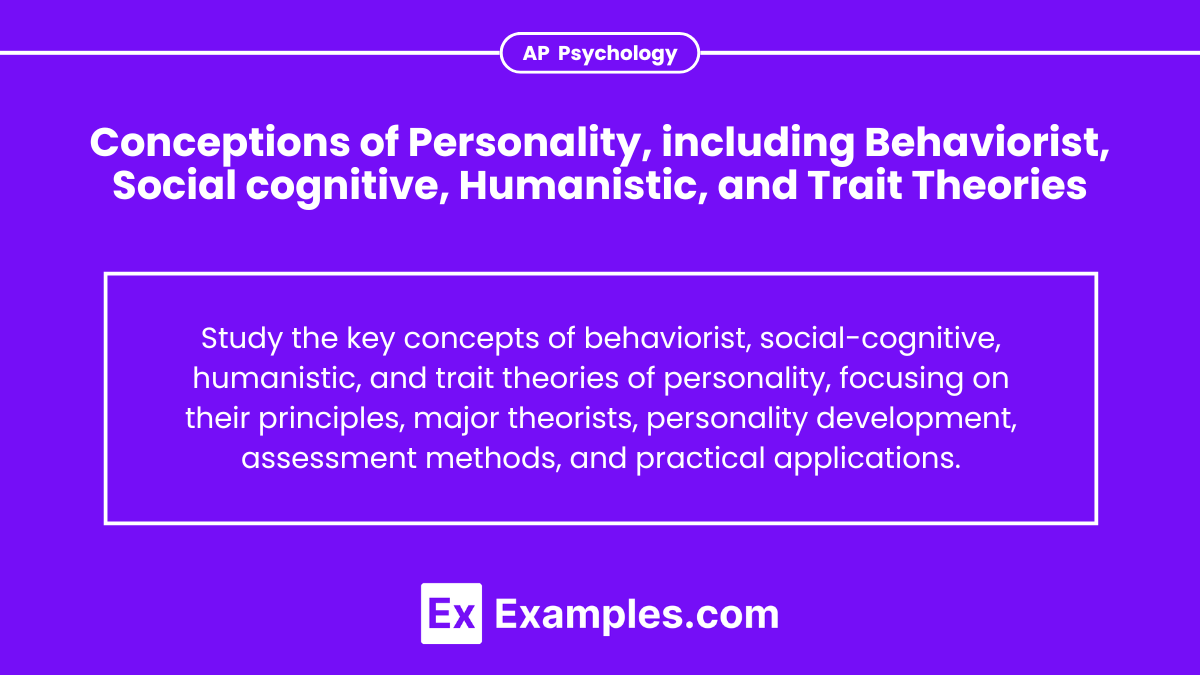Learn the major conceptions of personality. Study behaviorist theories emphasizing environmental influences and conditioning, social-cognitive theories highlighting observational learning and self-efficacy, humanistic theories stressing personal growth and self-actualization, and trait theories identifying stable personality characteristics. Understand how each theory explains personality development, assessment methods, and their practical applications. This comprehensive knowledge will aid in achieving a high score on the AP Psychology exam.
Learning Objectives
Focus on understanding the key principles of behaviorist, social-cognitive, humanistic, and trait theories. Learn how behaviorist theories emphasize environmental influences and conditioning, social-cognitive theories highlight observational learning and self-efficacy, humanistic theories stress personal growth and self-actualization, and trait theories identify stable personality characteristics. Comprehend how these theories explain personality development, assessment methods, and practical applications in real-life scenarios.
Conceptions of Personality
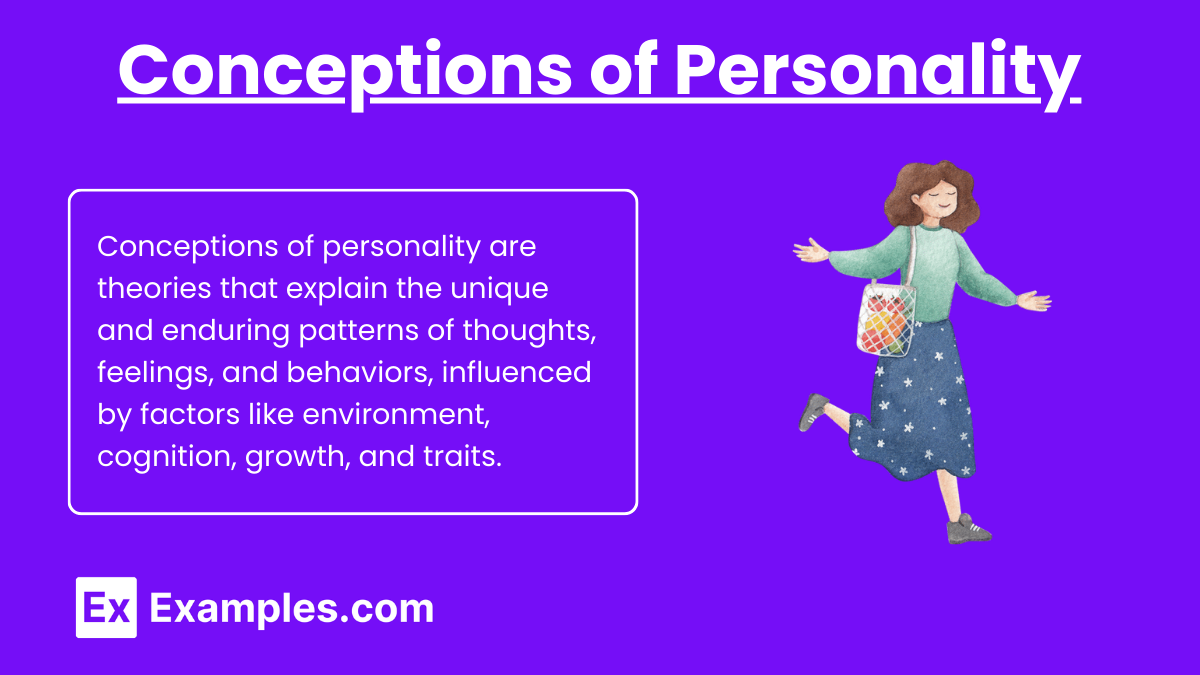
Personality
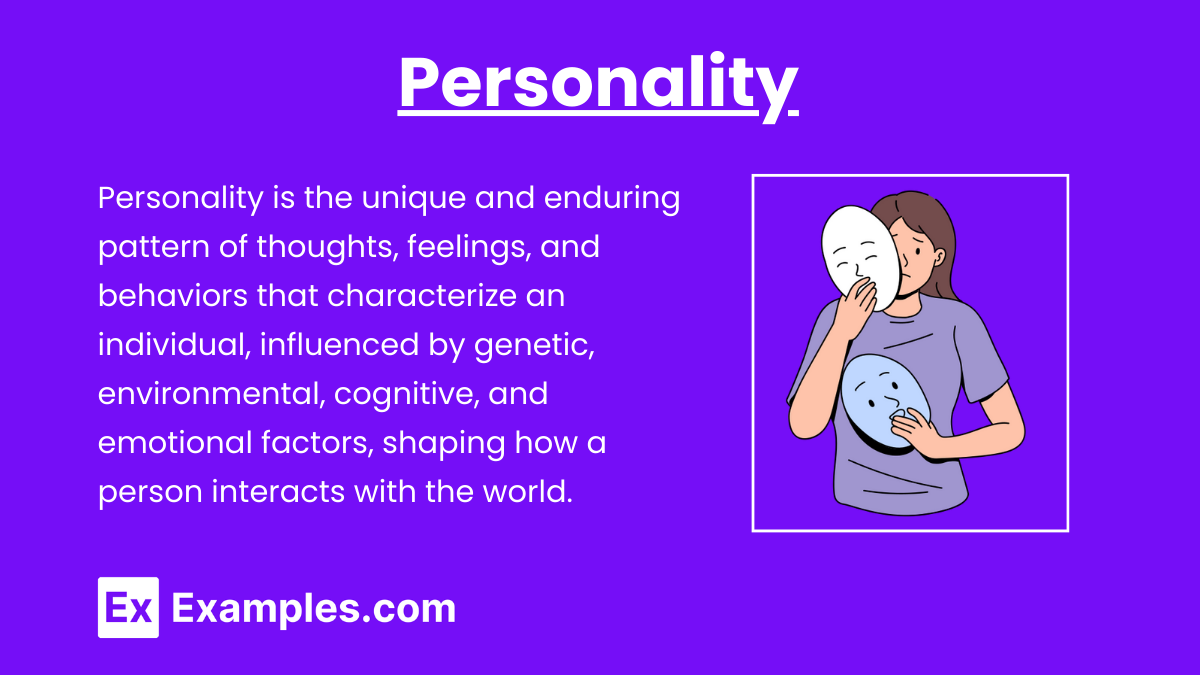
Personality refers to the unique and enduring patterns of thoughts, feelings, and behaviors that characterize an individual. It encompasses the consistent traits that make a person unique and influence how they interact with the environment and other people.
Major Theories of Personality
1. Psychoanalytic Theory
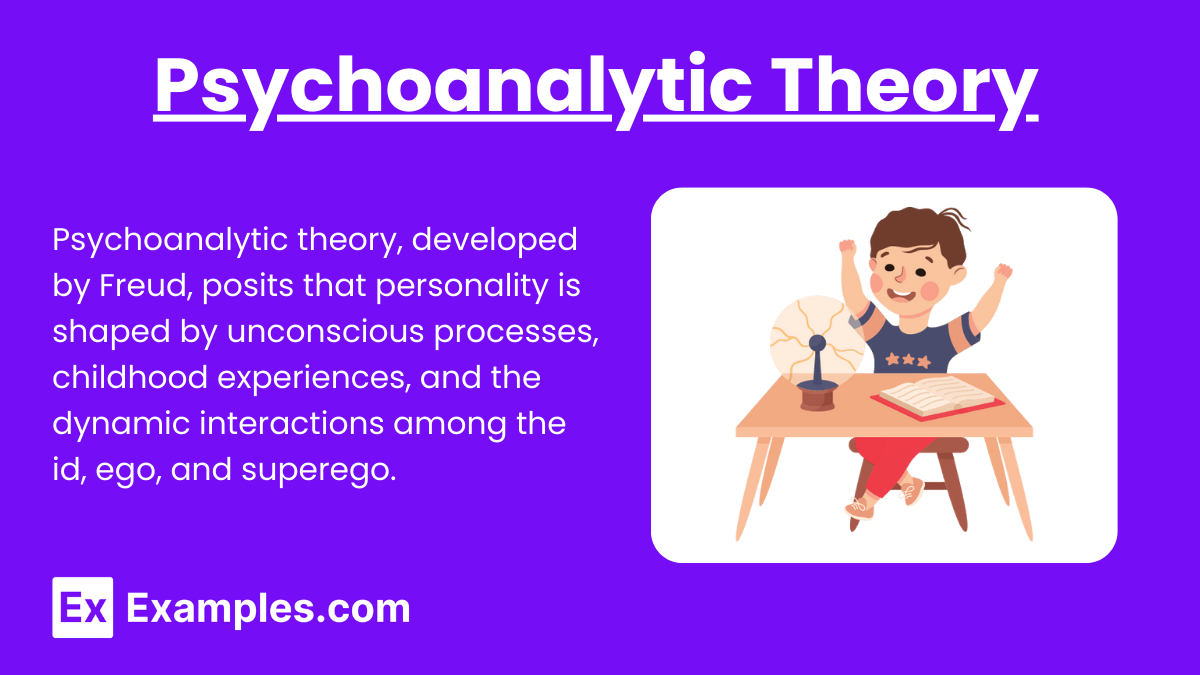
Developed by Sigmund Freud, this theory posits that personality is influenced by unconscious processes and childhood experiences.
- Structure of Personality:
- Id: The primitive and instinctual part of personality that operates on the pleasure principle.
- Ego: The rational part that operates on the reality principle, mediating between the desires of the id and the constraints of the superego.
- Superego: The moral conscience that incorporates societal standards and values.
- Psychosexual Stages of Development:
- Oral Stage (0-18 months): Pleasure centers on the mouth.
- Anal Stage (18-36 months): Pleasure focuses on bowel and bladder elimination.
- Phallic Stage (3-6 years): Pleasure zone is the genitals; coping with incestuous feelings.
- Latency Stage (6 to puberty): Dormant sexual feelings.
- Genital Stage (puberty on): Maturation of sexual interests.
2. Trait Theory
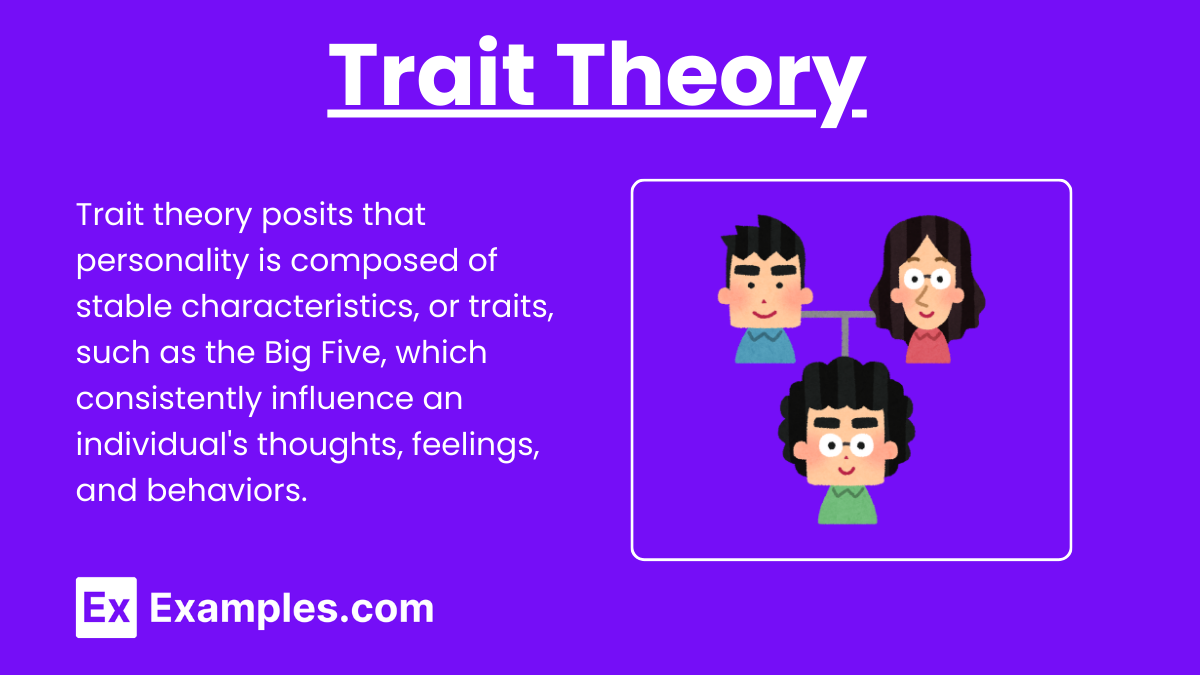
Trait theory suggests that personality is made up of a number of traits, which are relatively stable characteristics that influence behavior.
- The Big Five Personality Traits (OCEAN):
- Openness to Experience: Imagination, creativity, and curiosity.
- Conscientiousness: Organization, dependability, and discipline.
- Extraversion: Sociability, assertiveness, and enthusiasm.
- Agreeableness: Trust, altruism, and kindness.
- Neuroticism: Emotional instability, anxiety, and moodiness.
3. Humanistic Theory

Humanistic theories emphasize personal growth and the achievement of human potential. Key figures include Carl Rogers and Abraham Maslow.
- Carl Rogers:
- Self-Concept: The organized, consistent set of perceptions and beliefs about oneself.
- Unconditional Positive Regard: Acceptance and support of a person regardless of what they say or do.
- Abraham Maslow:
- Hierarchy of Needs: A pyramid of human needs, with basic physiological needs at the bottom and self-actualization at the top.
- Physiological Needs: Food Sources, water, warmth, rest.
- Safety Needs: Security, safety.
- Belongingness and Love Needs: Intimate relationships, friends.
- Esteem Needs: Prestige, feeling of accomplishment.
- Self-Actualization: Achieving one’s full potential, including creative activities.
4. Social-Cognitive Theory
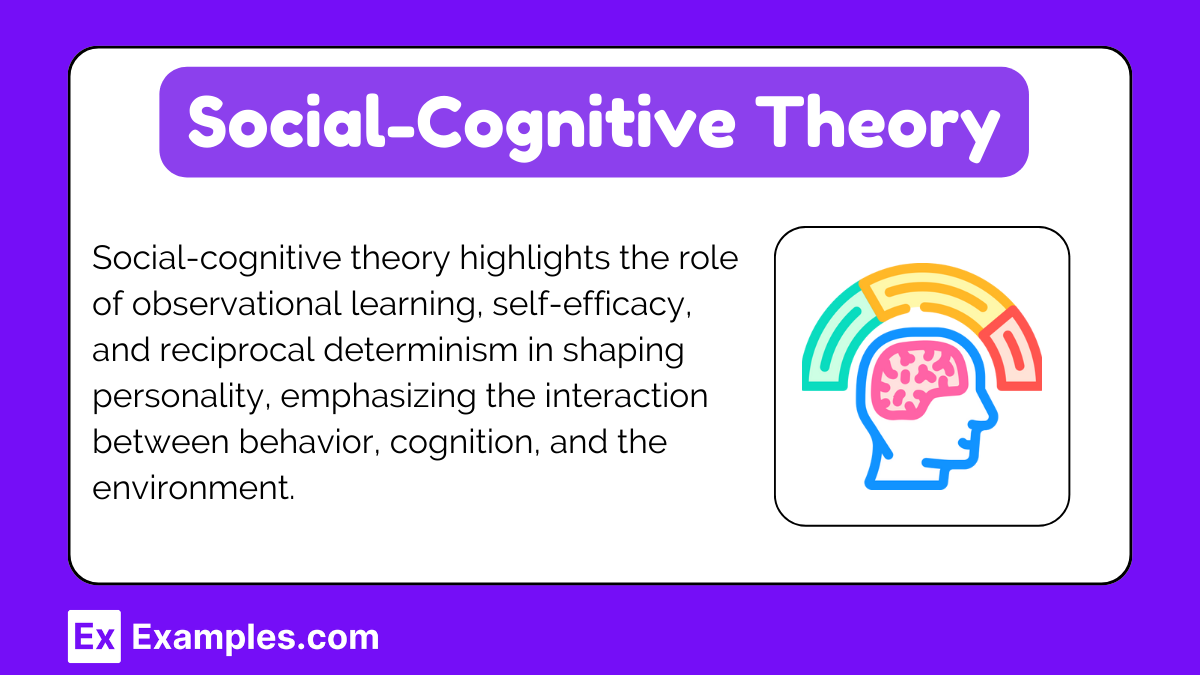
Proposed by Albert Bandura, this theory emphasizes the importance of observational learning, self-efficacy, and situational influences on behavior.
- Reciprocal Determinism: The interacting influences of behavior, internal cognition, and environment.
- Self-Efficacy: One’s belief in their ability to succeed in specific situations.
- Observational Learning: Learning by observing others, also known as modeling.
5. Biological Perspectives
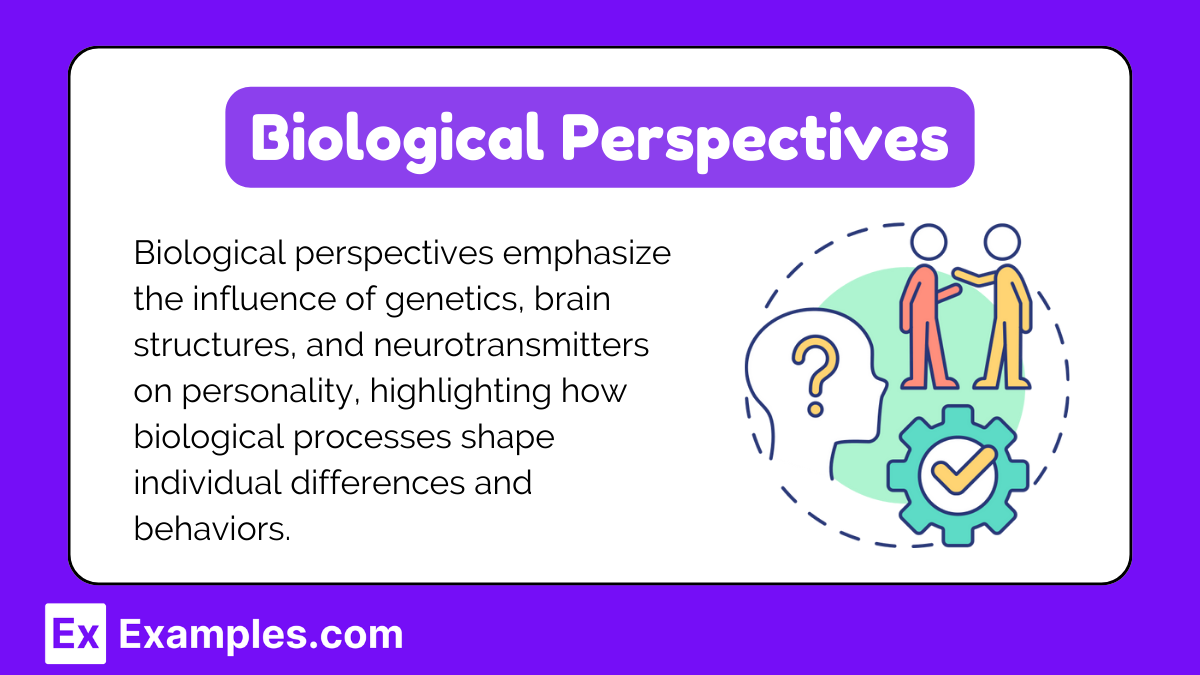
This perspective looks at the influence of genetics and biological processes on personality.
- Genetic Influences: Twin and adoption studies show a significant genetic component to personality.
- Brain Structures: Certain brain regions are linked to specific personality traits (e.g., the amygdala and neuroticism).
- Neurotransmitters: Chemicals in the brain that affect mood and behavior, such as dopamine and serotonin.
6. Behaviorist Theory

Behaviorist theories focus on the role of the environment and external stimuli in shaping behavior. Key figures include B.F. Skinner and John B. Watson.
- Classical Conditioning (Pavlov): Learning through association. An unconditioned stimulus that naturally brings about a particular response is paired with a neutral stimulus until the neutral stimulus alone brings about the response.
- Example: Pavlov’s dogs salivated when they heard a bell because they associated the bell with food.
- Operant Conditioning (Skinner): Learning through consequences. Behaviors followed by favorable consequences are more likely to occur, and behaviors followed by unfavorable consequences are less likely to occur.
- Positive Reinforcement: Adding a rewarding stimulus to increase a behavior.
- Negative Reinforcement: Removing an aversive stimulus to increase a behavior.
- Positive Punishment: Adding an aversive stimulus to decrease a behavior.
- Negative Punishment: Removing a rewarding stimulus to decrease a behavior.
- Behavioral Therapy: Techniques such as systematic desensitization and token economies are used to modify maladaptive behaviors.

